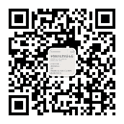| 基金项目: |
|
| 摘要点击次数: 1429 |
| 全文下载次数: 347 |
| 中文摘要: |
| 目的 探索采用闭环反馈控制的以问题为基础的学习(problem-based learning,PBL)在呼吸病学教学中的应用价值。方法 在PBL教学中,在学生开放式询问、讨论及PBL自主学习结束后,通过组织医学生小组PPT汇报、书面总结与机制图展示给予闭环反馈。在闭环反馈前后观察师生的教学参与度、授课质量评价、学生对重点知识的辨识度、对重点症状特性掌握的维度及对PBL教学工作的满意度,并进行闭环反馈前后的比较。采用GraphPad Prism软件5.01进行分析。结果 闭环反馈能提高导师教学参与度自我评价[闭环反馈前后分别为(7.97±0.91)和(8.77±0.64),P<0.001]及学生对导师教学参与度的评价[闭环反馈前后分别为(8.09±0.79)和(8.74±0.45),P<0.001],同时提高学生对导师授课质量的评价[闭环反馈前后分别为(88.61±6.53)和(92.59±5.44),P<0.001]。通过闭环反馈,学生对大纲要求知识点的辨识度明显升高[闭环反馈前后分别为(84.00±21.75)和(90.22±16.18),P=0.017],对PBL教学工作的整体满意度也明显提高[(8.93±0.67)和(9.37±0.64),P<0.001]。结论 实践证明闭环反馈控制PBL教学方法对呼吸病学教学能够起到良好的教学效果,值得在临床教学推广。 |
| 英文摘要: |
| Objective To explore the application value of problem-based learning (PBL) controlled by closed-loop feedback in the teaching of respiratory medicine. Methods In PBL teaching, after students' open inquiry, discussion and PBL self-study, closed-loop feedback was given by organizing PPT report, written summary and mechanism diagram display of medical students. The participation of teachers and students, teaching quality, the degree of students' identification of key knowledge points, the breadth and depth of mastering the characteristics of key symptoms and the satisfaction of PBL teaching work were investigated, and the differences were compared before and after the closed-loop feedback. GraphPad Prism 5.01 was used in the analysis. Results It was found that closed-loop feedback could improve the self-evaluation of tutor's teaching participation [(7.97±0.91) vs. (8.77±0.64), P < 0.001] and students' evaluation on teaching participation of tutor [(8.09±0.79) vs. (8.74±0.45), P < 0.001]. At the same time, students' evaluation on the teaching quality of tutors was also improved [(88.61±6.53) vs. (92.59±5.44), P < 0.001]. After closed-loop feedback, the students' identification of the required knowledge points in the syllabus was significantly increased [(84.00±21.75) vs. (90.22±16.18), P = 0.017]. The overall satisfaction with PBL teaching was also improved obviously [(8.93±0.67) vs. (9.37±0.64), P < 0.001]. Conclusion Practice has proved that the closed-loop controlled PBL teaching approach has a good effect on the teaching of respiratory medicine, and it's worth popularizing in clinical teaching. |
|
查看全文 查看/发表评论 下载PDF阅读器 |
|
| 关闭 |
|
|
|
